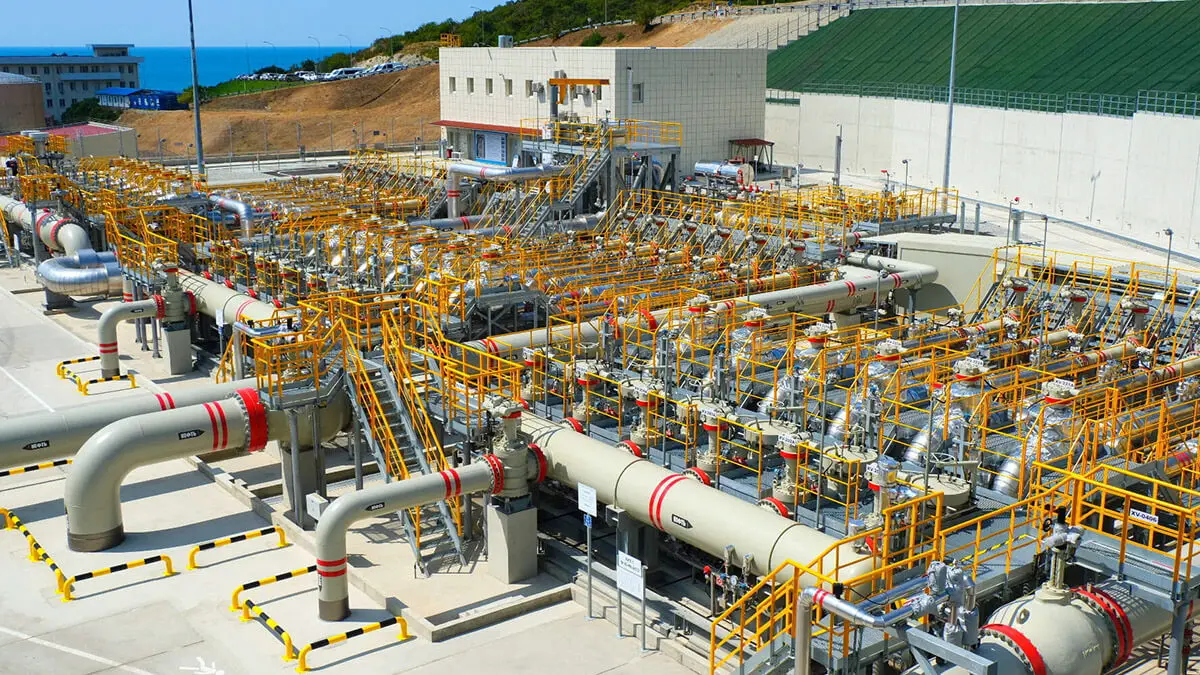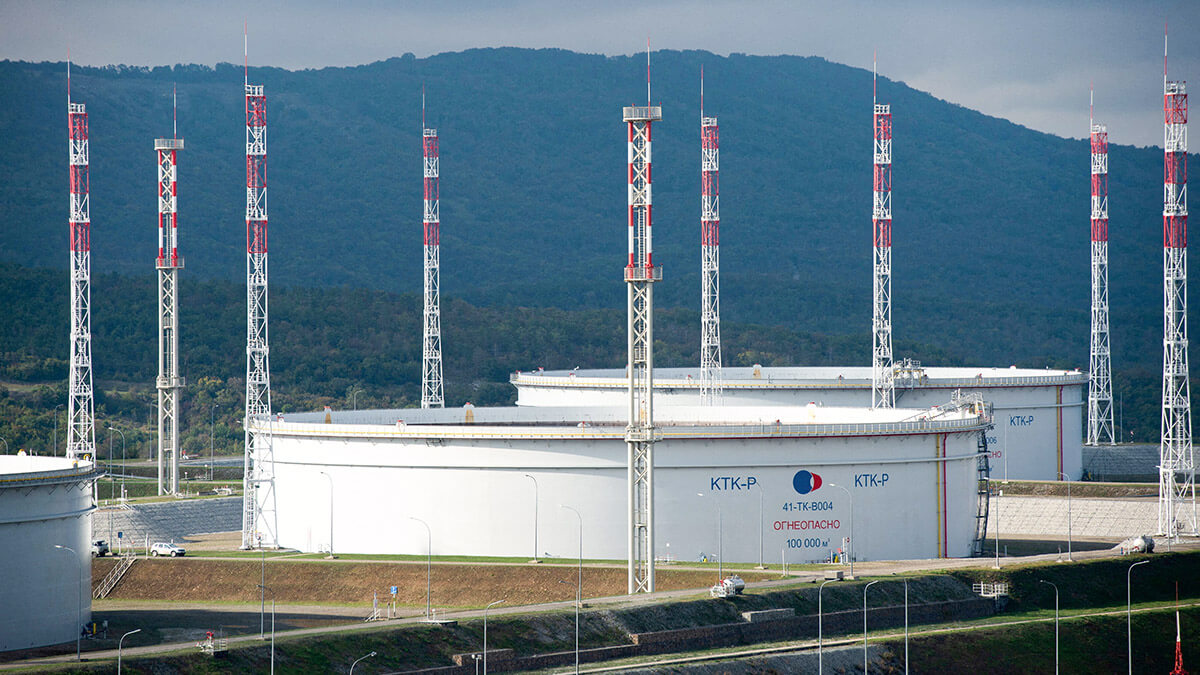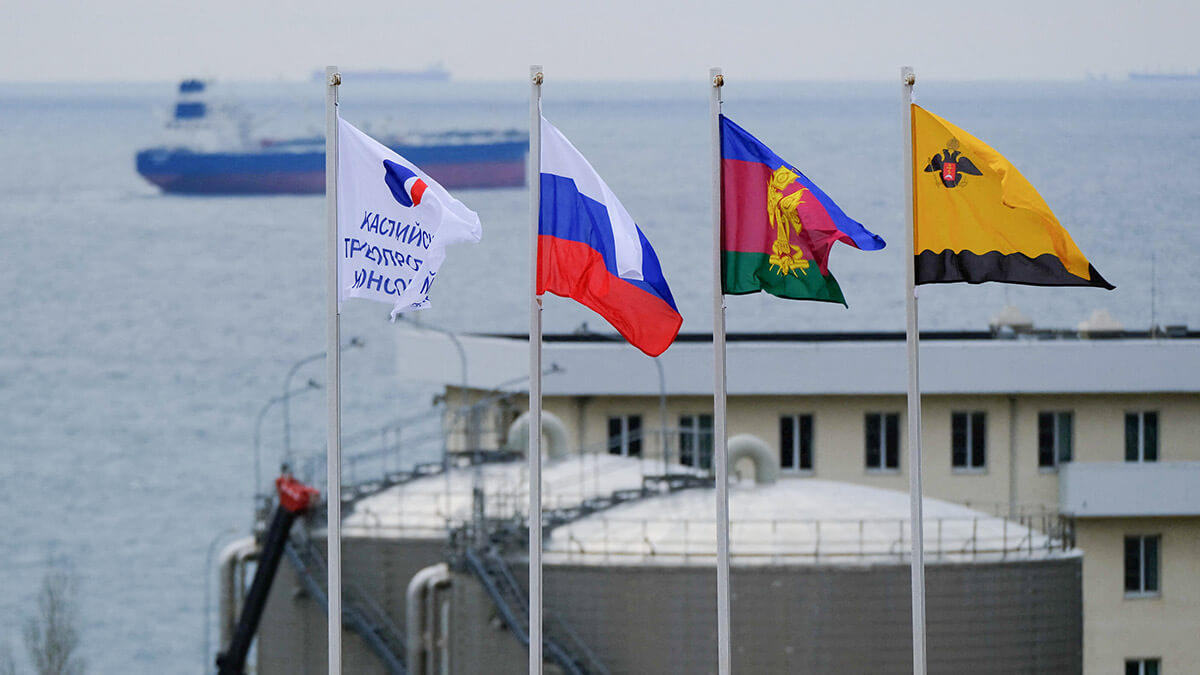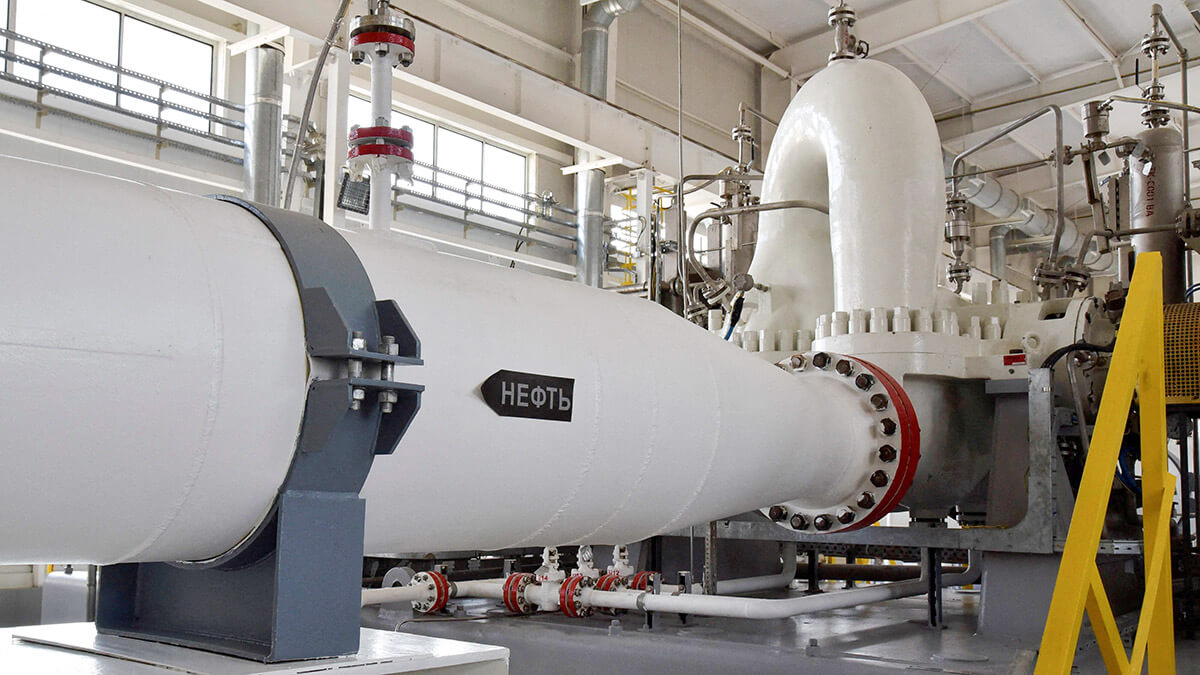Diversifying Europe's Gas Supply: The Geopolitical Stakes of the Trans-Caspian Pipeline

- Background: The Trans-Caspian Pipeline
- The Southern Gas Corridor: A Modern Energy Artery
- The Geopolitical Importance of the Trans-Caspian Pipeline for Europe
- Strategic Advantages of Implementing the Trans-Caspian Pipeline
- Conclusion
The Eurasian region, with its vast reserves of natural gas in Central Asia and Europe's growing demand for secure energy supplies, has transformed into a significant geopolitical battleground. As numerous authors have already stated in their writings on the topic for the International Institute IFIMES, energy transit projects such as pipelines hold a central strategic position. Among these, the Trans-Caspian Pipeline project stands out as a strategic initiative aiming to meet this demand and create a new route for transferring energy from Turkmenistan to Europe.
Background: The Trans-Caspian Pipeline
The Trans-Caspian Pipeline is – as the numerous IFIMES authors have earlier noted, and professor Anis H. Bajrektarevic elaborated in his 2020 book ‘Caspian’ – a proposed project designed to transport natural gas from Turkmenistan, across the Caspian Sea seabed, to Azerbaijan, and from there to European markets. This pipeline is expected to span approximately 300 kilometers, originating from the Turkmenbashi field on the eastern shores of the Caspian Sea. After crossing the seabed, it would connect to Azerbaijan’s gas transmission network and deliver gas to Europe via existing pipelines such as the Trans-Anatolian Pipeline (TANAP) and the Trans-Adriatic Pipeline (TAP). This route serves as an alternative to transporting gas through Russian territory and, if implemented, could significantly alter the balance of energy power in the region.
The Southern Gas Corridor: A Modern Energy Artery
The Trans-Caspian project is part of a broader initiative known as the Southern Gas Corridor, one of the most important global energy projects today. It was designed to transport natural gas from the Caspian Sea to the European continent. The importance of this corridor has grown notably since the outbreak of the war in Ukraine and Europe’s subsequent efforts to diversify its energy import routes.
The Southern Gas Corridor consists of three major segments:
- South Caucasus Pipeline (SCP): Starting in Baku, Azerbaijan, and running through Georgia to Turkey.
- Trans-Anatolian Pipeline (TANAP): Extends from the Georgia-Turkey border to Turkey’s western border with Greece.
- Trans-Adriatic Pipeline (TAP): Passes through Greece, Albania, and the Adriatic Sea, connecting to the European energy grid in Italy.
The total length of this corridor exceeds 3,500 kilometers, with an initial capacity to transport approximately 60 billion cubic meters of gas per year expandable to 120 billion cubic meters in the future.
The Geopolitical Importance of the Trans-Caspian Pipeline for Europe
Europe has long been significantly dependent on gas imports from Russia. Since the start of Ukraine’s conflict in 2022, this dependence is a major concern for European countries. Economic sanctions and reduced Russian gas exports prompted the European Union to seek alternative, more secure energy sources.
In this context, the Trans-Caspian Pipeline could serve as a strategic solution to reduce Europe’s reliance on Russian gas and diversify its energy sources. Establishing a new energy corridor especially post-Ukraine war has become more critical than ever. Although such action should have been initiated after the 2009 Russian gas crisis, factors such as lower costs and reliance on legacy infrastructure diverted Europe's attention. From an economic perspective, accessing Turkmenistan’s gas reserves the fourth largest in the world could help stabilize gas prices in Europe and ease the financial burden caused by the energy crisis. While Europe has attempted to offset the gas shortfall through LNG imports and renewable energy, the pipeline remains a potentially vital asset.

Strategic Advantages of Implementing the Trans-Caspian Pipeline
The successful implementation of the Trans-Caspian pipeline could offer significant strategic benefits, including:
- Access to Central Asia’s Vast Reserves: Turkmenistan, with its massive gas reserves, is a potential key supplier for Europe. Connecting it to Europe’s energy network would enhance supply security.
- Reducing Political Risk: Diversifying energy routes away from politically volatile countries like Russia reduces Europe’s vulnerability to political crises and sanctions.
- Strengthening Regional Cooperation: Projects like the Trans-Caspian pipeline can foster regional integration among Caspian, Caucasus, and European countries, providing a foundation for broader economic and security cooperation.
Challenges and Obstacles
The Trans-Caspian pipeline faces numerous obstacles. Key challenges include:
- Legal Disputes over Caspian Sea Status: Although the five littoral states (Iran, Russia, Turkmenistan, Kazakhstan, and Azerbaijan) signed a legal convention in 2018, disagreements remain regarding the construction of infrastructure and pipelines across the seabed.
- Opposition from Russia and Iran: These two major gas-exporting countries have traditionally opposed pipeline projects that threaten their geopolitical interests. They may attempt to obstruct the project through diplomatic or economic means, as the pipeline would reduce Turkmenistan’s dependency on them.
- Need for Substantial Investment: A project of this scale requires significant foreign investment. Legal and security uncertainties in the region may deter international investors.
- Requirement for Long-term Purchase Agreements: For the project to be economically viable, European consumers must commit to long-term gas purchase contracts. Without these commitments, investors may be reluctant to proceed.

The Role of International Actors
- European Union: With a strategic objective of energy diversification, the EU strongly supports alternatives to Russian gas. If implemented, the Trans-Caspian pipeline could enhance the EU’s leverage in global energy negotiations.
- Turkey: As a key transit country for the Southern Gas Corridor, Turkey stands to benefit greatly. The pipeline would further solidify its role as a strategic energy hub connecting Asia and Europe.
- United States and China: The U.S. supports projects that reduce Russian energy influence. Conversely, China—one of Turkmenistan’s largest gas importers—may not welcome expanded Turkmen exports to Europe.
Scenario 1: Full Success Realization of a Central Asia Europe Energy Corridor
In this scenario, all political, legal, and economic challenges are resolved, and the project is implemented with the support of key countries and international institutions.
Key Success Factors:
- Effective resolution of Caspian Sea legal disputes, ensuring environmental and legal compliance.
- Western investment from institutions such as the EBRD and European Investment Bank, and energy firms like BP, ENI, or TotalEnergies.
- Long-term gas purchase contracts signed by the EU or Western consortia.
- Political backing from the U.S. and EU to reduce Europe’s energy dependence on Russia and boost Turkey’s strategic role.
Regional and Global Impacts:
Europe gains access to diversified and reliable energy resources. Turkmenistan reduces its reliance on China and Iran, gaining greater economic independence. Turkey becomes a critical intersection for Eurasian energy transit.
Scenario 2: Limited Success Partial Implementation with Lower Capacity
In this scenario, the pipeline is constructed but not at full capacity or strategic scope. Environmental concerns, Russian pressure, and weak investment limit its scale.

Features:
- Limited capacity (e.g., 10–15 BCM/year).
- Participation by smaller, regional firms instead of major international players.
- Legal issues remain unresolved, but bilateral or trilateral agreements allow partial progress.Existing infrastructure (SCP, TANAP, and TAP) is used without capacity upgrades.
Consequences
Turkmenistan gains a limited foothold in the European market. The project’s strategic impact on Russian influence is modest. Global investors remain cautious, and future development depends on further geopolitical shifts.
Scenario 3: Failure Project halted Due to Political and Economic Obstacles
This outcome results from failed negotiations, regional resistance, or lack of economic viability.
Potential Reasons for Failure:
- Strong opposition from Russia and Iran, using environmental and legal objections.
- Lack of financing due to high legal and political risk.
- Absence of firm purchase commitments; preference for LNG from the U.S., Qatar, or Algeria.
- Domestic instability in Turkmenistan or Azerbaijan affecting project continuity.
Turkmenistan remains dependent on gas exports to China and Iran. Turkey’s role as an energy corridor weakens. Russia maintains a significant share in the European gas market. Europe remains reliant on LNG imports, complicating diversification efforts.
Scenario 4: Parallel and Multilateral Alternatives
If the Trans-Caspian project is delayed or fails, regional and global actors may pursue alternative options to achieve similar objectives.
Main Alternatives:
- Increased LNG Exports: Turkmenistan and other regional states invest in liquefaction facilities; Europe deepens LNG imports from the U.S., Qatar, Nigeria, and Algeria.
- Exports via Iran (if sanctions are lifted): A shorter, cheaper route through Iran becomes viable, benefiting Tehran and Ashgabat but contradicting Western containment policies.
- Expanded Azerbaijani Exports: Azerbaijan increases output from the Shah Deniz field and captures a larger share of the European gas market without Turkmen gas.
- China’s Strategic Intervention: China may invest heavily or apply pressure to prevent Turkmen gas exports to Europe, preserving its own energy security.

Conclusion
As the numerous previous IFIMES studies found out, very future of the Trans-Caspian Pipeline depends on a complex interplay of international, regional, economic, and environmental factors. While Europe’s drive for energy decoupling pulls the project forward, geopolitical pressure from inner Eurasia actors like Russia and Iran; peripheral like China, India, GCC or the EU; or the external like EFTA, USA, and the like will remain an oscillatory challenge. Whether this complex undertaking succeeds, fails, or is delayed, the pipeline will have far-reaching implications for the balance of power in Eurasia and the global energy security landscape. More than ever, the future of energy hinges on politico-military projections, diplomacy, socio-economics, and technological innovation.
IFIMES - International Institute for Middle East and Balkan Studies, based in Ljubljana, Slovenia, has a special consultative status with the United Nations Economic and Social Council ECOSOC/UN in New York since 2018, and it is the publisher of the international scientific journal "European Perspectives."

